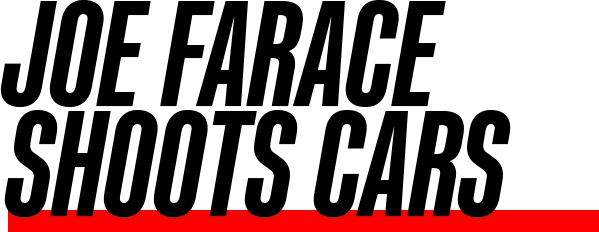Today’s Post by Joe Farace
Because I never know what kind of situation that I’ll face when photographing an indoor car show, I prefer using a zoom lens. Zooms come in two varieties: fast or slow. Many slower zoom lenses have a floating maximum f/stop where that the maximum aperture changes within the zoom range of the lens. Take a 24-105mm f/3.5-5.6 zoom lens as an example: At the widest focal length of 24mm the maximum aperture is the f/3.5. As the lens is zoomed toward the telephoto end, that maximum aperture shifts to the f/5.6 opening.

How I made this shot: This Chevrolet HHR is suspended from a crane over the show floor at a previous Denver International Auto Show—catch the SAAB sign in the background. Camera used was a Four-thirds system DSLR, lens was the Zuiko Digital ED 14-35mm f/2.0 SWD lens. The f/2 maximum aperture of the Zuiko Digital ED 14-35mm f/2.0 SWD was a big help when working under the low light levels found at these kinds of venues. Exposure was 1/100 second at f/4, ISO 650, with the lens at 14mm.
The Zuiko Digital ED 14-35mm f/2.0 SWD uses two ED (Extra-low Dispersion) glass elements to minimize chromatic aberration and features rugged, high-quality construction and is dust and drip-proof. All Zuiko Digital lenses allow light to strike the image sensor at a near-perpendicular angle, minimizing degradation and light loss, even at the edge of the frame or when using a wide-angle lens.
 If you enjoyed today’s blog post and would like to buy Joe a cup of Earl Grey tea or maybe a cup of hot chocolate ($2.50), click here. And if you do, thanks so much.
If you enjoyed today’s blog post and would like to buy Joe a cup of Earl Grey tea or maybe a cup of hot chocolate ($2.50), click here. And if you do, thanks so much.
Along with photographer Barry Staver, I’m co-author of Better Available Light Digital Photography that’s available from Amazon for $21.88 prices with used copies selling at giveaway prices—less than two bucks, as I write this.
